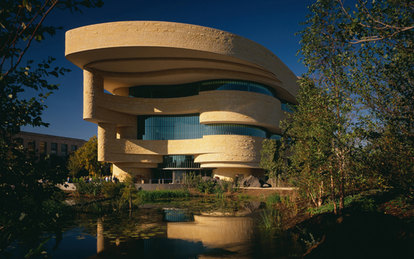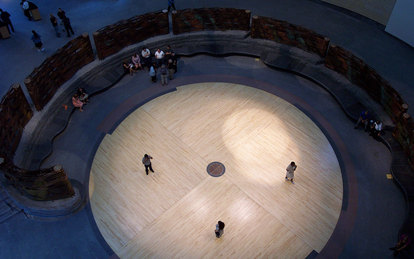National Museum of the American Indian
Buildings tell stories. From their materials, to their shapes, they represent histories, and symbolize cultures. Our team knew how important it was for the National Museum of the American Indian to tell the story of Indigenous people in the Western Hemisphere. The building is a reflection of the conversations had and stories shared.
Client
Smithsonian Institution
Location
Washington, DC
Markets/Services
Architecture, Cultural, Federal Cultural, Interiors, Museums
Size
260,000 SF
Featured Awards
Award of Excellence, Virginia Chapter of the American Society of Landscape Architects, 2007
Platinum Building Team Project Award, Building Design & Construction, 2005
Sculpted by wind and water. Dictated by the alignment of planets. The National Museum of the American Indian building on the National Mall is attuned to elements of the natural world.
The United States acknowledged past and current Indigenous people with this addition to the Smithsonian Institution in the nation’s capital. Even with the museum’s magnificent size, it just begins to share the full stories of Native peoples in the Western Hemisphere.
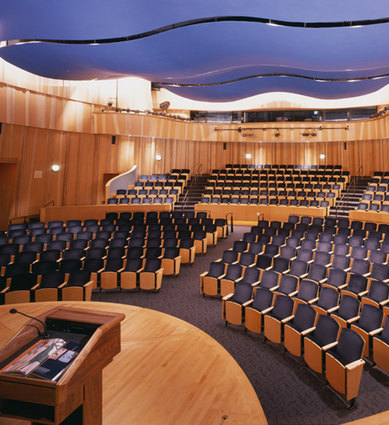
Our team, along with other design firms, understood the significance of this museum, and knew that we had an obligation to engage as many different Native Americans as possible to ensure the building would ultimately represent the variety of backgrounds and histories that make the Native American culture so strong.
Unique in form as well as function, the building assumes an unusual shape, curving into itself. The consistent allusion to nature was vital, as Native American cultures strongly value the relationship between humans and the environment. To communicate this connection, buff colored limestone was chosen as the primary material, meant to appear like natural rock. Throughout the exterior and interior Native American symbolism abounds.
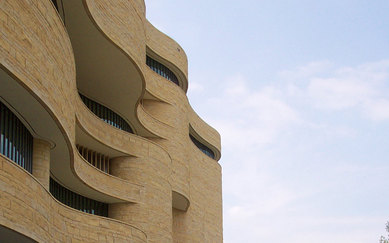
The building was carefully oriented to the cardinal directions marked by “father” rock formations brought in from each of the four corners in the Western Hemisphere. Entry plazas and walkways made of American Mist stone reference the alignment of planets and Native American cultures.
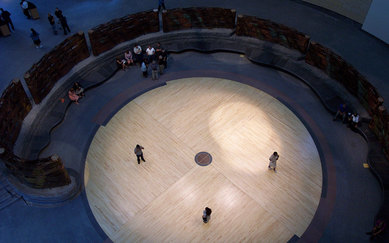
The soaring dome at the entry represents a central gathering and ceremonial space. Everywhere one looks, cultural references occur. Even inside the interior of the elevators, copper-lined walls include illustrations of flying birds.
The result is a building that pays homage to Native people, and welcomes all to visit, learn, and appreciate the stories the museum tells.
